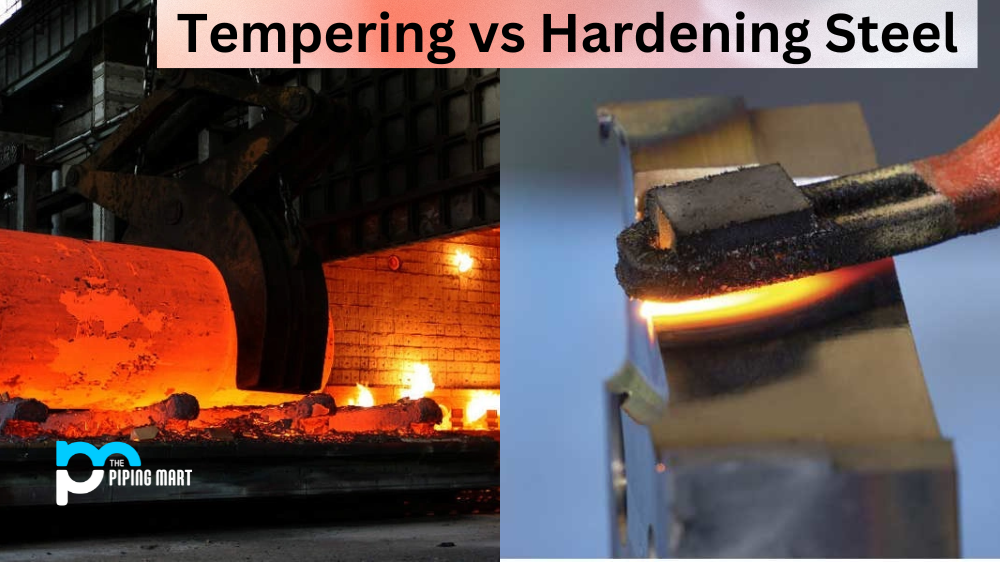If you’re looking to increase the longevity of a steel object, two processes you should consider are tempering and hardening. Both processes can be used to strengthen steel, but they have different benefits and drawbacks depending on the application. Let’s take a look at what makes each process unique and how to decide which one is right for your purpose.
What Is Hardening?
Hardening is the process of increasing the strength of steel by introducing stress into its molecular structure. The process involves heating the steel to a specific temperature before quickly cooling it with liquid nitrogen or oil. This rapid cooling causes a change in the crystalline structure of the steel, resulting in an increase in hardness that allows it to resist wear better than untreated steel. However, hardening also makes the steel more brittle, meaning that it is more likely to crack or break when exposed to force or pressure.
What Is Tempering?
Unlike hardening, tempering does not involve changing the crystalline structure of steel. Instead, tempering works by increasing the flexibility of hardened steel so that it won’t break as easily when exposed to force or pressure. To do this, tempered steel is heated to a specific temperature before being cooled slowly—often in the air—which increases its tensile strength without making it overly brittle. However, because tempering does not increase hardness as hardening does, tempered steel will not be as resistant to wear as hardened steel will be over time.
How Do You Choose Between Hardening and Tempering?
The choice between hardening and tempering ultimately comes down to your needs and preferences for your particular application. If you are looking for increased strength with minimal flexibility—such as with tools that need high levels of durability—hardened steel may be your best option. On the other hand, if you want enhanced flexibility without sacrificing too much strength—such as with objects that require repeated flexing—tempered steel may be more suitable for your purposes.
How are tempering and hardening different?
The main difference between tempering and hardening is that tempering improves the ductility of steel while hardening increases its hardness. Hardening makes the steel more brittle, and less tough, while tempering increases its toughness while reducing its hardness.
Which process is better?
The answer to this question depends on what you are trying to achieve with your steel. If you need a hard, strong material, then hardening is the better choice. If you need a tough, ductile material, then tempering is the better choice.
Are there any other benefits of tempering or hardening?
In addition to the benefits mentioned above, tempering and hardening can also improve the wear resistance of steel. Tempering can also help to reduce distortion when heat-treating large pieces of steel.
Conclusion:
In conclusion, there are pros and cons associated with both hardening and tempering when applied to metal objects like tools or car parts. Ultimately, deciding between them comes down to understanding their differences and selecting the one that best fits your needs based on what kind of toughness or flexibility you require from your object after treatment. With this knowledge in mind, you can make an informed decision about which process best serves your purpose when strengthening metal objects made from steel!

Pipingmart is a B2B portal that specializes in metal, industrial and piping items. Additionally, we share the latest information and information about materials, products and various types of grades to assist businesses that are involved in this business.




